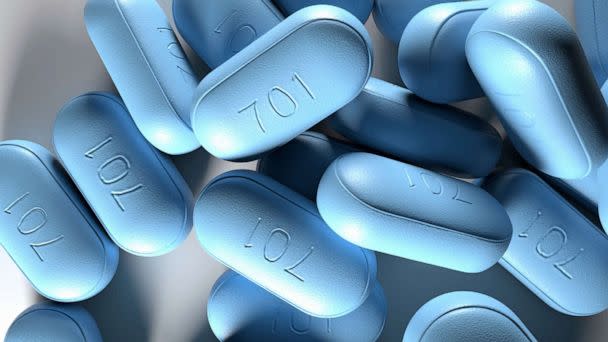VIRAL: A World Without AIDS dives into the epidemic and a 40-year path toward progress

A new ABC News Live special, “Viral: A World Without AIDS,” will look at the history of the HIV/AIDS epidemic from the perspective of people impacted most. The special airs December 1 at 8:30PM ET.
ABC News spoke with family members of people who died of AIDS, doctors who have witnessed the transformation in treatment options and people currently living with an HIV diagnosis.
MORE: Newly diagnosed HIV cases dropped during the pandemic – here’s why that’s bad news
The Centers for Disease Control and Prevention estimates that roughly 1.2 million people are currently living with HIV in the U.S., and that nearly 1 in 8 do not know that they are HIV positive.
ABC News spoke with Beyoncé’s mother Tina Knowles Lawson and HIV Prevention Specialist Damon Jacobs, for whom the HIV/AIDS epidemic hit home.
“I rushed to the hospital as soon as I found out,” Knowles Lawson said about hearing the news that her nephew Johnny was sick. “We had no forewarning,” she said. “He shared with me that he had AIDS in the hospital.”

Johnny, who would eventually die of AIDS, is just one person out of the nearly 675,000 people the CDC estimates have died since the epidemic began in the mid-1980s.
The families, friends and loved ones close to those that have passed make the number of people impacted by HIV/AIDS exponentially higher.
CDC Director Dr. Rochelle Walensky, whose research has focused on HIV/AIDS policy and infectious diseases, spoke with ABC News about the medical advancements made in the fight against HIV/AIDS.
Early in the epidemic, Walensky said, the options were few. “What you could do was you could give them grace,” she said. “You could give them comfort, you could give them pride.”
MORE: Survivors and activists speak out 40 years after discovery of AIDS
The first medical breakthrough came in 1987, six years after the first reported case of AIDS in the U.S., with the drug AZT.
“There were side effects,” Walensky said, “And in fact… it was more than that. It was, you know, 14 pills, three times a day.”
Thirty-five years later, new medications, collectively known as "Pre-Exposure Prophylaxis," or "PrEP drugs," have changed the outlook for people who have a higher risk of becoming HIV positive. With PrEP, one pill a day could help people remain HIV negative, even when engaging in higher risk behaviors like condomless sex.

Yet despite the drug going on its 10th year of being on the market, only 25% of eligible people were prescribed the drug, according to the CDC.
To understand more about this figure, ABC News spoke with Dr. Jared Baeten, the vice president of clinical development at Gilead Sciences, which manufactures the medication.
“PrEP has been game-changing for people who take it,” he said. “But some people don't have tickets to the game yet, and we need to get them PrEP options.”
Tune in to ABC News Live on December 1 to hear the stories, struggles and life-changing advancements made in the battle against HIV/AIDS.
VIRAL: A World Without AIDS dives into the epidemic and a 40-year path toward progress originally appeared on abcnews.go.com
